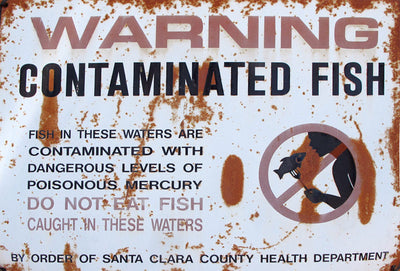Mercury Contamination In Water Supplies: What You Need To Know
RSS
Since a few environmental regulations have been rolled back in recent weeks, we’ve been getting quite a few questions about some key contaminants, one of which being mercury. Mercury is a neurotoxin that can cause problems in developing fetuses and children at very low concentrations. This article discusses how mercury can contaminate drinking water and how people can minimize their exposure to the neurotoxin.
How Does Mercury Contaminate Water Supplies?
The primary way that mercury enters the environment is through the exhaust emissions from coal-burning power plants. Once airborne, mercury is incorporated into rain, deposited on land, where it enters the water cycle. In addition to coal emissions, mining & metal production industries are also major contributors to mercury contamination in water supplies.
How Are People Exposed To Mercury?
Assuming that someone doesn’t have a high occupational exposure to mercury, the largest exposure route for most people is dietary (through food). Mercury bioaccumulates in living tissue, which means that the amount of mercury found in an organism (including humans) rises with age. In addition to bioaccumulation, mercury is also biomagnified, which means that tissue concentrations of mercury rise in organisms as you go up the food chain. These two concepts are important for us to understand for mercury health effects and exposure, because long-living predatory fish (e.g. shark, tuna, swordfish) tend to contain more mercury than fish that eat plankton (e.g. sardines, mackerel). The US FDA has a nice resource available online that shows the best and worst fish for pregnant women.
Who Is At Highest Risk For Mercury Exposure?
Pregnant women are at most at risk for mercury contamination, because even low levels of mercury can negatively impact a developing fetus. The US FDA, EPA and US CDC are reputable, science-backed, sources of information for medical advice on the topic. In addition to these recommendations, we also encourage pregnant women to pay attention to local guidelines for fish caught in local waters.
Mercury Removal From Drinking Water
Although food is the dominant source of mercury for most people, mercury can contaminate drinking water supplies, particularly near mining sites. Unlike the more advanced water filters required to filter toxic metals like lead and chromium 6, mercury can be filtered from water using carbon filters.
We encourage everyone to take advantage of Hydroviv’s “Help No Matter What” approach to Technical Support when it comes to water quality and water filtration. Drop us a line (support@hydroviv.com) or through the live chat functionality on the site!
Related Articles:
4 Things To Know Before Testing Your Home's Water For Lead
Pittsburgh's Lead Level Exceeds EPA Limits In 2016
Does Your Home's Pre-2014 Plumbing Contain Lead?




